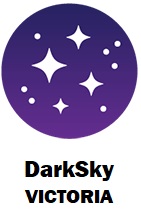Data from citizen scientists reveal a worrying growth in light pollution over the past decade
Light pollution is skyrocketing | Science
Artificial lighting at night is contributing to a rapid increase in light pollution, as reported by Kyba et al. (1) on page 265 of this issue. By analyzing tens of thousands of observations made by citizen scientists around the world over the past 12 years, the authors found that the dimmest stars in the night sky are being hidden by a 10% yearly increase in the sky background as a result of artificial light. This growth is difficult to discern with satellites now in operation because their detectors are blind to the blue light emitted by light-emitting diodes (LEDs), which are progressively replacing older lamps (such as high-intensity discharge). The results of the study point to the need for satellites that can detect the visible light in different color bands and make a strong case for reversing light pollution and its wide-ranging negative effects, from ecological to cultural to health-related.
